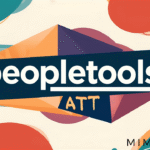Investor Interest in Game Startups: What Genres Are Hot Right Now
The global gaming industry is thriving, and investors are paying attention. In recent years, game startups have received record levels of funding, with venture capitalists, tech giants, and even celebrities joining the race to back the next big hit. But not all game genres are created equal—some attract more investor interest than others.
So what genres are dominating investor portfolios in 2025? And why? This article explores the shifting dynamics of game funding, the trends shaping investor behaviour, and the genres getting the most traction in the market today.

Strategic Investments in Real-Money and Skill-Based Gaming
One genre that continues to catch the eye of investors is real-money gaming, particularly card-based games like poker. The global popularity of poker has created demand for customised, secure, and engaging platforms, giving rise to a niche market for poker game development services.
Startups in this segment are benefiting from the convergence of gaming, fintech, and mobile technology. Investors are attracted to the monetisation models—such as buy-ins, in-game purchases, and VIP tiers—that provide recurring revenue.
A notable example is Octro, an Indian-based mobile gaming company behind Teen Patti and Octro Poker, which raised over $15 million in private equity funding. According to VCCircle, the company’s user base crossed 100 million, thanks in part to its seamless gameplay and real-currency elements.
Also, according to Statista, the real-money gaming market is expected to grow from $65 billion in 2023 to over $90 billion by 2027, making it one of the fastest-growing verticals in gaming.
Custom game development firms offering niche products—especially in poker, rummy, and fantasy sports—are increasingly part of investor conversations due to their monetisation potential and scalability.
Mobile Games Continue to Dominate
Mobile gaming remains the undisputed leader when it comes to genre interest and investor dollars. It’s convenient, social, and has a massive reach. In 2024 alone, mobile games generated over $90 billion in global revenue, accounting for more than half of total gaming revenue worldwide.
Hyper-casual games—those quick to play and simple to understand—continue to attract investment because of their high virality and low production cost. Companies like Rollic Games and Voodoo have built entire portfolios around rapid-release hyper-casual titles, often launching multiple games a month and testing user response.
One of the major success stories is Homa Games, which raised $100 million in 2022 to scale its AI-driven publishing platform for hyper-casual games. Their approach—using data to refine gameplay loops and maximise monetisation—proved incredibly appealing to investors.
But hyper-casual isn’t the only sub-genre attracting funding. Mid-core games that blend casual accessibility with deeper strategy, like Clash Royale or AFK Arena, are on the rise, offering better lifetime value (LTV) per user.
The Rise of Multiplayer and Social Games
As the pandemic changed how people connect, social interaction within games became a hot commodity. Multiplayer games—especially those offering co-op or team-based experiences—saw explosive growth, and investors took note.
Games like Among Us, Roblox, and Fall Guys demonstrated that games don’t need hyper-realistic graphics or AAA budgets to go viral. Instead, they need creativity, replayability, and community.
According to Newzoo, over 70% of Gen Z gamers say they play games to socialise with friends. This shift has investors looking at platforms and games that enable social connection alongside core gameplay. Playco, for example, a mobile game company specialising in “instant games” playable directly within messaging apps, raised $100 million in a Series A round—without ever launching a mainstream title.
Live-ops strategies—real-time events, updates, and social competitions—are another investor magnet, extending game lifecycles and boosting user retention.

Web3 and Blockchain-Based Gaming
While the hype around Web3 has cooled slightly, blockchain games remain a topic of investor curiosity. Projects that focus on true digital ownership, tokenised rewards, and player-driven economies have created a new type of value proposition.
Games like Gods Unchained and Illuvium allow users to own NFTs tied to in-game assets, creating potential resale value. According to Crunchbase, in 2022, Sky Mavis, the team behind Axie Infinity, secured $152 million in Series B funding at a valuation of nearly $3 billion. However, the subsequent market correction and regulatory scrutiny have made investors more cautious in this space.
Despite the volatility, many VCs still see long-term potential. A 2024 report by Blockchain Game Alliance states that 44% of investors plan to fund more Web3 game projects in the next 12 months, particularly those offering hybrid models that merge traditional gaming with blockchain features.
Edutainment and Serious Games Gaining Ground
Gamification isn’t just for fun anymore—it’s also for education, healthcare, and professional development. “Serious games” are designed with a purpose beyond entertainment and are drawing the attention of impact investors and educational institutions alike.
The global edutainment market is projected to reach $19.5 billion by 2030, growing at a CAGR of 11.2%. Platforms like Duolingo and Kahoot! have gamified learning with great success, and newer startups are exploring everything from language training to medical simulation.
Investors are especially interested in B2B applications, where game mechanics can improve employee onboarding, training, and engagement. For example, Attensi, a Norway-based company that develops gamified corporate training programs, raised $26 million in 2021 and continues to expand its enterprise client base across Europe and the U.S.
The Female Gamer Market and Inclusive Game Design
Another genre trend that’s attracting investor attention is inclusivity. More than 46% of gamers are women (ESA 2024), and yet the majority of games still target male audiences. This gender gap presents a massive opportunity for developers and investors.
Casual and narrative-driven games—think Choices, Episode, or Design Home—have found huge success with female gamers. Startups that prioritise inclusive storylines, character customisation, and representation are not only socially progressive but commercially smart.
Venture capital firm Rebel Girls recently announced a $50 million fund dedicated to supporting women-led and female-focused entertainment projects, including gaming startups. Inclusive design is no longer a niche—it’s becoming an industry standard.
Conclusion
From mobile-first hits to blockchain experiments and poker platforms with real-cash mechanics, the genres attracting investor interest in 2025 are as varied as they are dynamic.
While traditional genres like strategy and action games still have their place, niches such as poker game development services, hyper-casual gaming, edutainment, and socially-driven multiplayer titles are carving out substantial market shares.
Investors are looking for products that combine innovation, scalability, and long-term user engagement. Whether it’s through microtransactions, community features, or gamified learning experiences, startups that can offer more than just gameplay are the ones making headlines—and raising capital.
As the market matures, expect investor interest to continue evolving. What’s hot today may not be tomorrow. But the demand for engaging, smart, and accessible games is here to stay.





